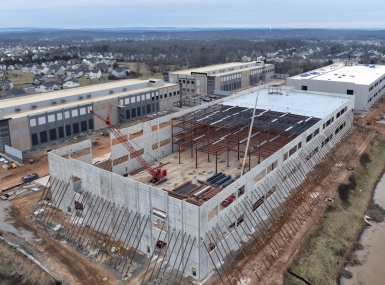President Biden enters U.S. back into Paris Climate Agreement
Upcoming Events
Related News

Key Takeaways
On February 19, President Joe Biden, through executive action, entered the U.S. back into the Paris Climate Agreement after being out of the global climate pact for 107 days. The U.S. originally joined the international treaty on December 12, 2015 during the Obama Administration; however, former President Donald Trump signed an executive order in 2017 pulling the U.S. out of the agreement, triggering a lengthy withdrawal process that did not take effect until November 4, 2020. President Biden signed an executive order on his first day in office reversing the pullout ordered by President Donald Trump. Entering back into the climate agreement is a component of President Biden’s comprehensive climate agenda.
Officially taking effect on November 4, 2016, the Paris Climate Agreement is a legally binding international treaty on climate change that includes nearly 200 countries. The agreement aims to substantially reduce global greenhouse gas emissions to limit the global temperature increase to 2 degrees Celsius above preindustrial levels. The U.S. is expected to pledge 2030 emissions cuts ahead of President Biden’s Earth Day summit on April 22.
While NACo does not have official policy on the Agreement itself, counties have a direct interest in national clean air standards and regulations. Under the Clean Air Act, states and counties serve as co-regulators with the federal government and are ultimately responsible for implementing new and existing air quality standards. Across the U.S., counties are experiencing new, often drastic, weather patterns and their effects which are attributed to climate change. Regardless of humanmade or a natural warming cycle, as counties adapt to a changing climate, NACo urges the federal government to aggressively pursue and support:
- National and international programs to research, develop and deploy carbon-neutral energy sources to reduce greenhouse gas emissions;
- National and local strategies, including private sector initiatives, to mitigate the impacts of climate change and enhance community resiliency; and
- Research and development of new technologies and commercialization of existing technologies that will contribute to reducing atmospheric carbon emissions.
Related News

Counties try to keep data center development in bounds
Once a cash cow, data center development is becoming a more delicate planning issue for counties, particularly as AI use drives demand.

New trails in Milwaukee County help curtail illegal park dumping
While new fines will help defray cleanup costs, Milwaukee County, Wis. Parks hopes making it harder to reach remote places will reduce illegal dumping.

EPA announces proposed Lead and Copper Rule Improvements
EPA announces proposed Lead and Copper Rule Improvements.